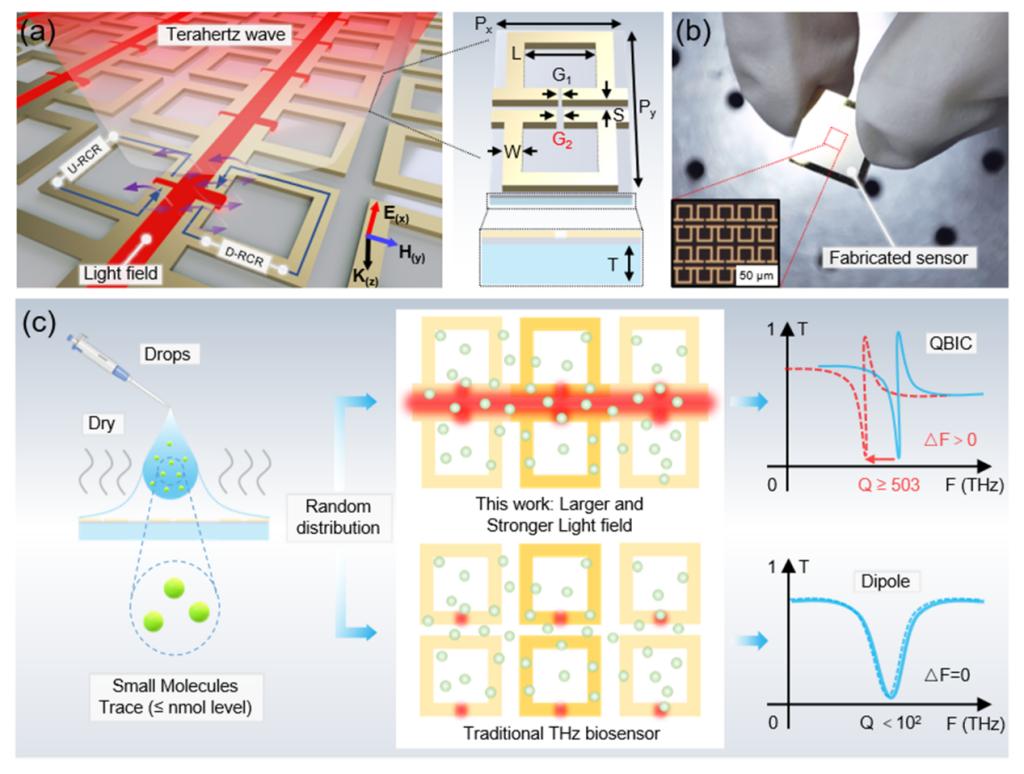In recent years, directed by academician Zhuang Songlin, Dr. Liu Bingwei from Terahertz Technology Innovation Team published a paper titled “Terahertz ultrasensitive biosensor based on wide-area and intense light-matter interaction supported by QBIC”in Chemical Engineering Journal (IF:16.744). He put forward the idea of metasurface design and sensing of Terahertz QBIC. Professor Peng Yan, Professor Wei Dongshan and Professor Zhu Yiming were the corresponding authors.
THz technology has attracted great interest in the field of chemistry and biomedicine due to its unique advantages such as strong penetration, nonionzing, and non-destructive. The rotation and vibration of a large number of biomolecules also provide spectral fingerprints in terahertz band for identification. The combination of metasurfaces and terahertz sensing technology owns the advantages of both label-free and high sensitivity, and it can enhance the coupling between analyte and the electronmagnetic wave. The design flexibility of metasurfaces also supports customized sensing of various samples.
In this work, they proposed a ring chain metasurface based on QBIC. Under the excitation of THz pulse, the introduction of structural asymmetry will lead to interference coupling between electric quadruple and magnetic dipole, and the QIBC can be observed in the farfield, which has ultrahigh or even infinite Q factor. Based on theoretical simulation, they found that QBIC has better sensing performance than eigne Dipole resonance. This is due to the following two points: 1)the huge increase in the effective sensing area realized by the spatial coupling of electromagnetic fields;2) the strong light field constrains determined by high Q factor, which greatly expand the spatial extent and intensity of in-plane light-matter interaction. They can also control the Q factor and resonance intensity of QBIC by optimizing the asymmetry, which depends on different biological samples and system resolution. Here, they proposed that QBIC metasurface exhibits ultrahigh Q factor of up to 503, and the theoretical sensitivity is up to 420 GHz/RIU. It can realize high performance sensing near 2 THz, and the direct limit of detection (LoD) for biomarker homocysteine (Hcy) can reach the pmol meter. Their results show that this QIBC metasurface biosensor can serve as a strong and powerful tool for high performance sensing of trace biomolecules, and can be generalized to cross wavelength regions beyond the THz band.

Link to the paper: https://www.sciencedirect.com/science/article/pii/S1385894723010781


